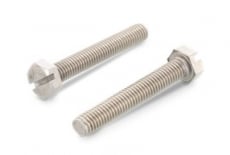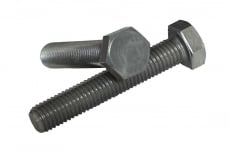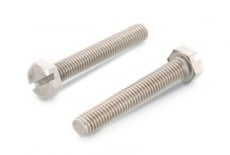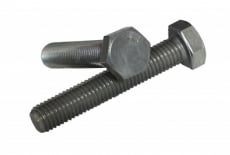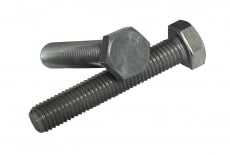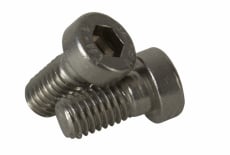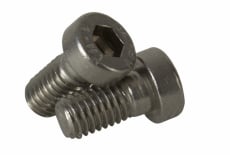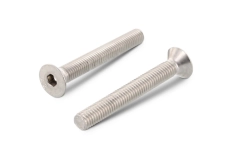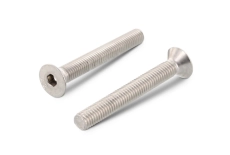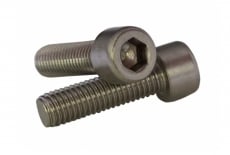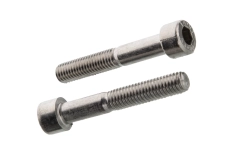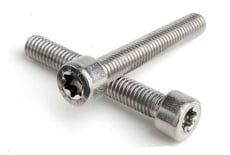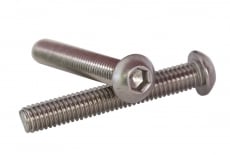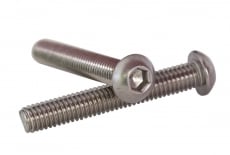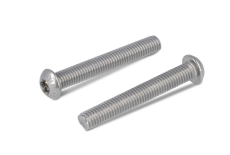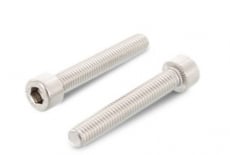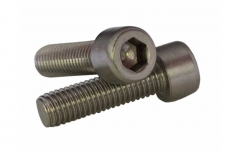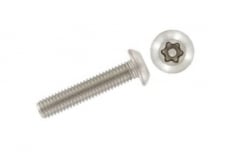Stainless steel, thanks to its resistance to corrosion, has found widespread use in various industries. It is often compared with other metals such as carbon steel or cast iron. Unlike them, stainless steel contains a significant amount of chromium, which forms a protective oxide film on the surface of the metal. This film prevents further oxidation and corrosion. However, the composition of stainless steel can vary widely, allowing for materials with different properties, including magnetic ones. Why does this happen? Let’s explore this question in more detail.
Does stainless steel magnetize? Why does one stainless steel attract a magnet while another does not? The answer lies in the complex chemical composition of this metal and the method of its processing.
Composition and Structure of Stainless Steel
Stainless steel is not a homogeneous material. Its properties largely depend on the precise ratio of different elements in the alloy. This will determine whether stainless steel is magnetized. Although all types of stainless steel contain chromium (which gives it corrosion resistance), iron, and other elements such as nickel (up to 10% in grade A2), carbon (0.05% in grade A2), as well as titanium, phosphorus, and molybdenum. The exact ratio of these elements depends on the specific grade of steel and determines its properties, such as corrosion resistance, strength, and ductility, magnetism, etc.
Carbon is a key element that affects the hardness and strength of steel. However, excessive amounts can lead to a loss of corrosion resistance. Therefore, the carbon content in stainless steel is carefully controlled.
Nickel plays an important role in forming the crystal structure of steel. It is this structure that determines whether the steel will be magnetic. For example, austenitic stainless steel, which contains a significant amount of nickel, usually does not exhibit magnetic properties.
Other elements such as molybdenum and titanium provide additional properties to the steel, such as enhanced corrosion resistance in aggressive environments or increased strength at high temperatures.
Iron plays a key role in forming the magnetic properties of steel, including stainless steel. Iron atoms have unpaired electrons that create magnetic moments. When these moments are oriented in the same direction, the material exhibits magnetic properties. The type of crystal lattice of iron also affects its magnetic properties. For instance, alpha-iron (ferrite) is a ferromagnet, meaning it is strongly attracted to a magnet.
Chemical Composition of Stainless Steel
|
Group |
Chemical Composition (mass.%) 1* |
|||||||||
|
C (carbon) |
Si (silicon) |
Mn (manganese) |
P (phosphorus) |
S (sulfur) |
Cr (chromium) |
Mo (molybdenum) |
Ni (nickel) |
Cu (copper) |
Прим. |
|
|
A1 |
0.12 |
1.0 |
6.5 |
0.200 |
0.15 bis 0.35 |
16 bis 19 |
0.7 |
5 bis 10 |
1.75 bis 2.25 |
2*, 3*, 4* |
|
A2 |
0.10 |
1.0 |
2.0 |
0.050 |
0.03 |
15 bis 20 |
5* |
8 bis 19 |
4.0 |
6*, 7*, 8* |
|
A3 |
0.08 |
1.0 |
2.0 |
0.045 |
0.03 |
17 bis 19 |
5* |
9 bis 12 |
1.0 |
6*, 8* |
|
A4 |
0.08 |
1.0 |
2.0 |
0.045 |
0.03 |
16 bis 18.5 |
2 bis 3 |
10.5 bis 14 |
1.0 |
8*, 9* |
|
A5 |
0.08 |
1.0 |
2.0 |
0.045 |
0.03 |
16 bis 18.5 |
2 bis 3 |
10.5 bis 14 |
1.0 |
8*, 9* |
* Notes:
1. In the absence of specific requirements for values, the maximum permissible values should be used.
2. Sulfur may be replaced with selenium.
3. For nickel content below 8%, the manganese content should be at least 5%.
4. There is no lower limit for copper content provided that the nickel content exceeds 8%.
5. Molybdenum content is determined by the manufacturer depending on specific application conditions.
6. The addition of molybdenum is at the discretion of the manufacturer.
7. If the chromium content is less than 17%, the nickel content should be at least 12%.
8. For austenitic steel with a maximum carbon content of 0.03%, the maximum nitrogen content is 0.22%.
9. Titanium (up to 5 times the carbon content but not more than 0.8%) or niobium and/or tantalum (up to 10 times the carbon content but not more than 1%) may be used to stabilize the alloy. The specific choice of stabilizing element and its content are determined according to the data provided in the table.
Classification of Stainless Steel by Magnetic Properties
Magnetic Stainless Steel:
Ferritic Steels: Contain high chromium content and low nickel content, which gives them corrosion resistance and magnetic properties due to the formation of a ferritic structure. Ferrite is magnetic, so ferritic stainless steel is usually attracted to a magnet. Due to their affordable price, they are widely used in various industries, including food processing equipment.
Martensitic Steels: Have high strength and hardness, are easily processed, and also possess magnetic properties. These are hardened austenitic stainless steels that partially transform into martensite. Martensite is magnetic, so martensitic stainless steel is also usually magnetic. It is used for making tools and components subjected to high loads.
Weakly Magnetic and Non-Magnetic Steels:
Austenitic Steels (according to the European classification - A2; A4; A5 according to the American Institute of Steel classification - AISI 304; AISI 316): They contain a significant amount of nickel, which gives them high corrosion resistance and ductility, as nickel stabilizes the austenitic structure. Austenite is non-magnetic, so stainless steel with a high nickel content is usually non-magnetic or slightly magnetized. Moreover, steel processing (hot or cold deformation) can change the crystal structure of austenite, which is manifested by the appearance of a weak magnetic effect even in steels that were not magnetic before processing. These steels are widely used in the food industry, medicine and other industries with high hygiene requirements.
Austenitic-Ferritic Steels: Combine the properties of both austenitic and ferritic steels, providing high strength and corrosion resistance.
Why Does One Stainless Steel Exhibit Magnetism While Another Does Not?
The magnetic properties of stainless steel are influenced by several key factors:
- Alloy Composition: As mentioned, the ratio of different elements (Fe, Cr, Ni, Mn, etc.) affects the crystal structure and, consequently, the magnetic properties.
- Heat Treatment: Processes such as hardening and tempering can alter the crystal structure of the steel and, as a result, its magnetic properties.
- Stress and Deformation: Mechanical stresses in the steel can also affect its magnetic properties.
In summary, the magnetic properties of stainless steel result from a complex interaction of various elements in its composition and mechanical and thermal factors. Therefore, to accurately determine whether a specific steel sample will be magnetic, it is necessary to know its exact chemical composition.
Although magnetic properties do not affect the corrosion resistance of stainless steel, they can limit its range of applications. For instance, in the food industry, pharmaceuticals, and medicine, non-magnetic grades of stainless steel are sometimes preferred, whereas in other applications, this is not a crucial factor.
Selecting Stainless Steel
When selecting stainless steel products, it is essential to consider not only their magnetic properties but also other characteristics such as:
- Corrosion Resistance: Ability to withstand aggressive environments.
- Strength: Ability to endure loads.
- Ductility: Ability to deform without breaking.
- Application Temperature: Ability to maintain properties at high and low temperatures.
By following these recommendations, you can select the right stainless steel for any task. To avoid possible mistakes when choosing stainless steel for a specific application, it is recommended to consult reliable manufacturers and their representatives. Specialists at dinmark.com.ua can help you choose the optimal material with all necessary characteristics, including magnetic properties and corrosion resistance.


 Bolts (23)
Bolts (23)